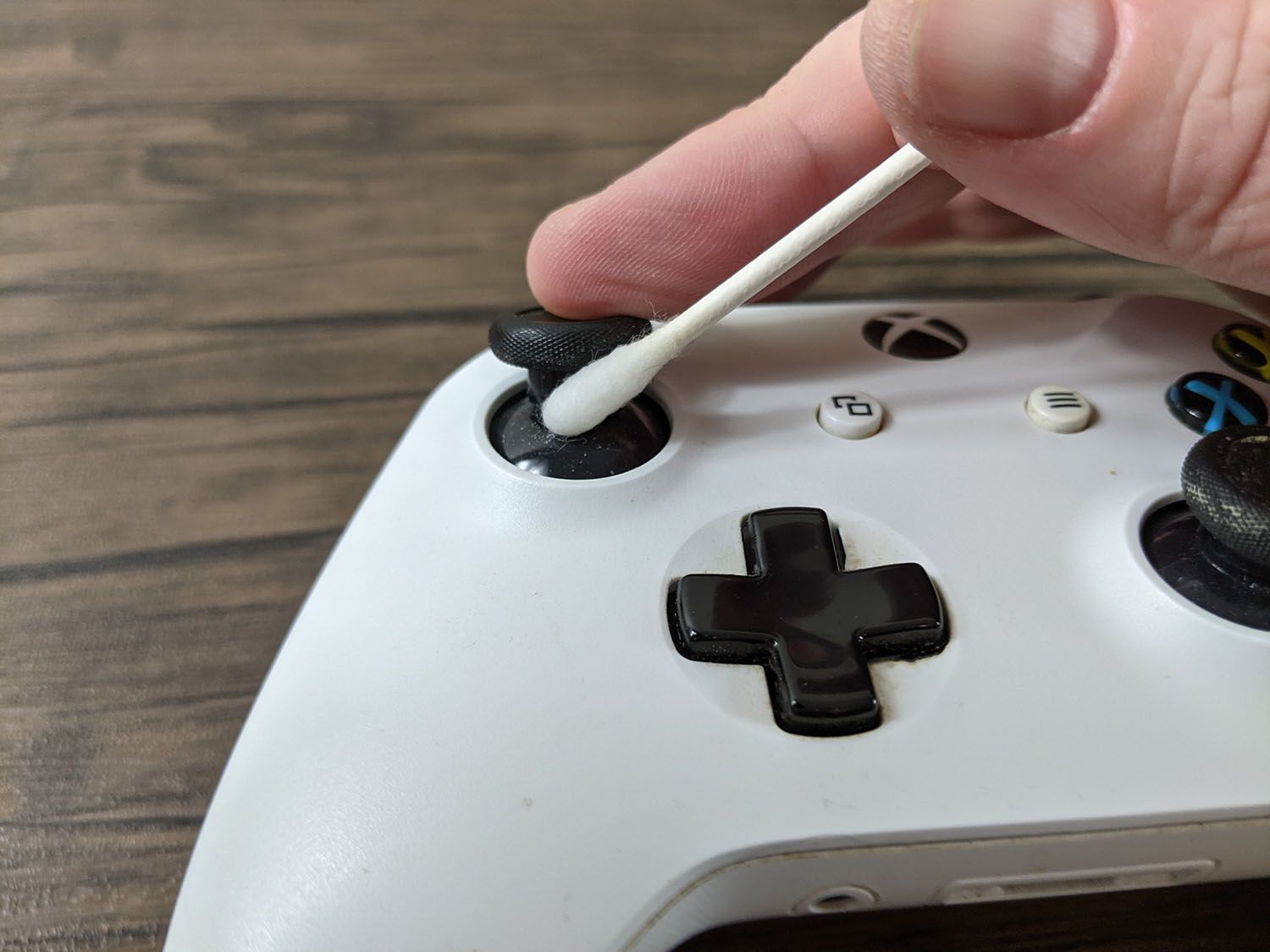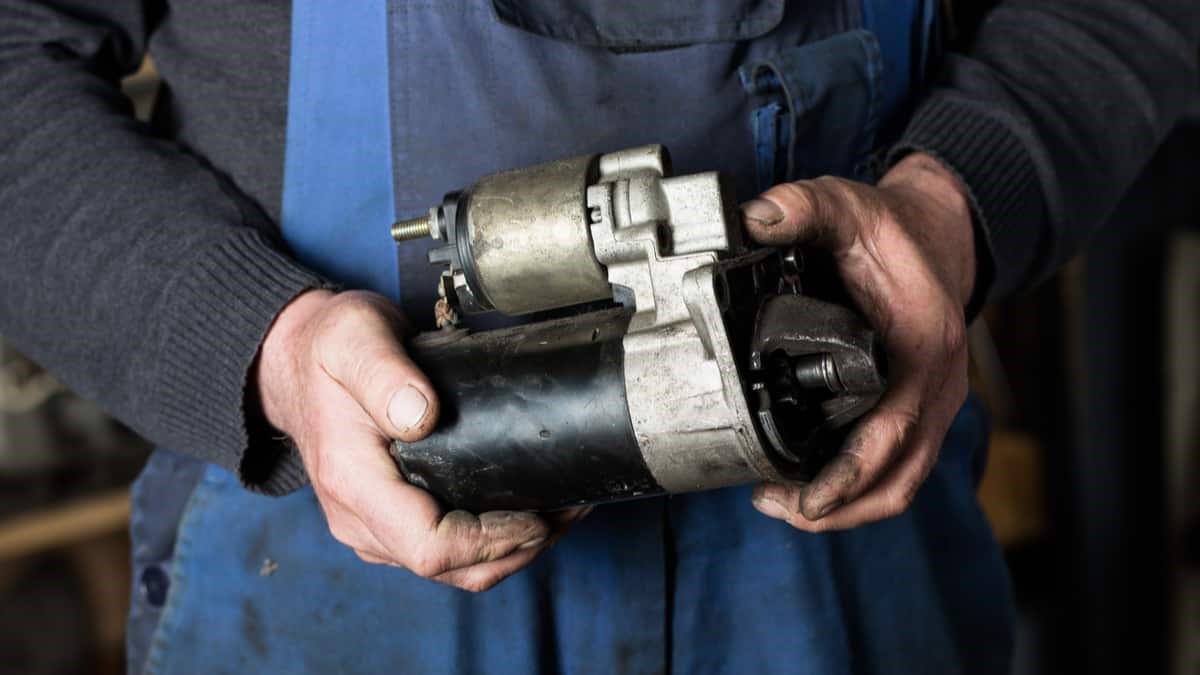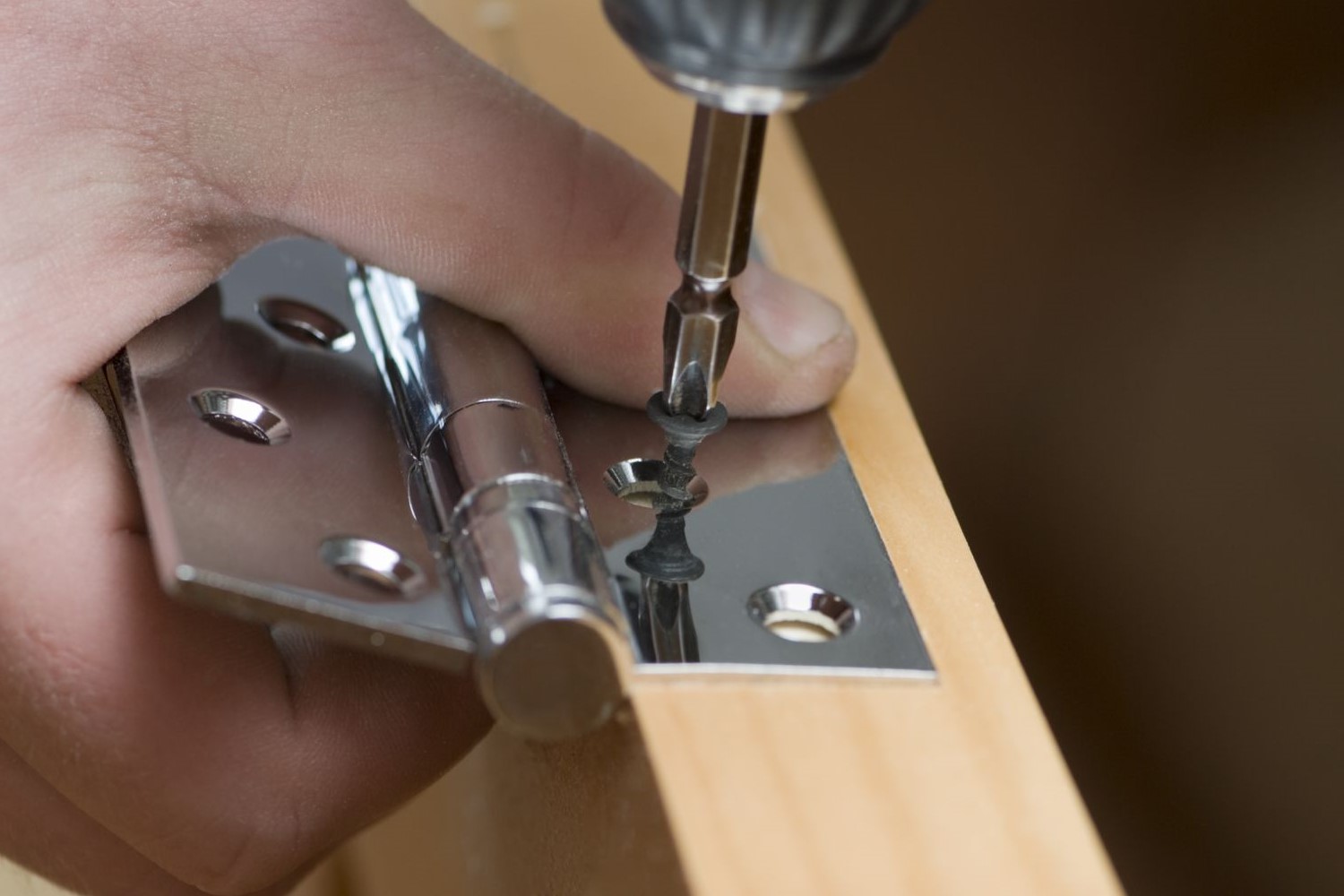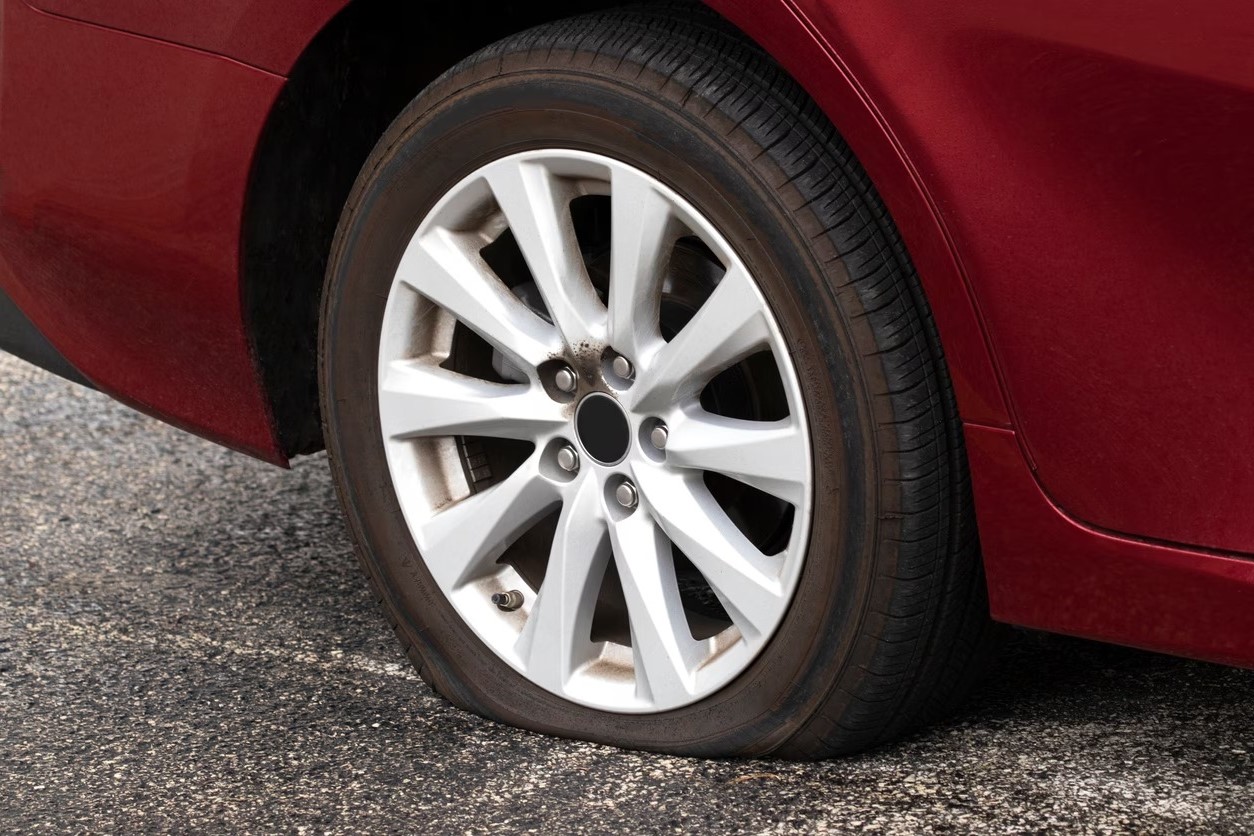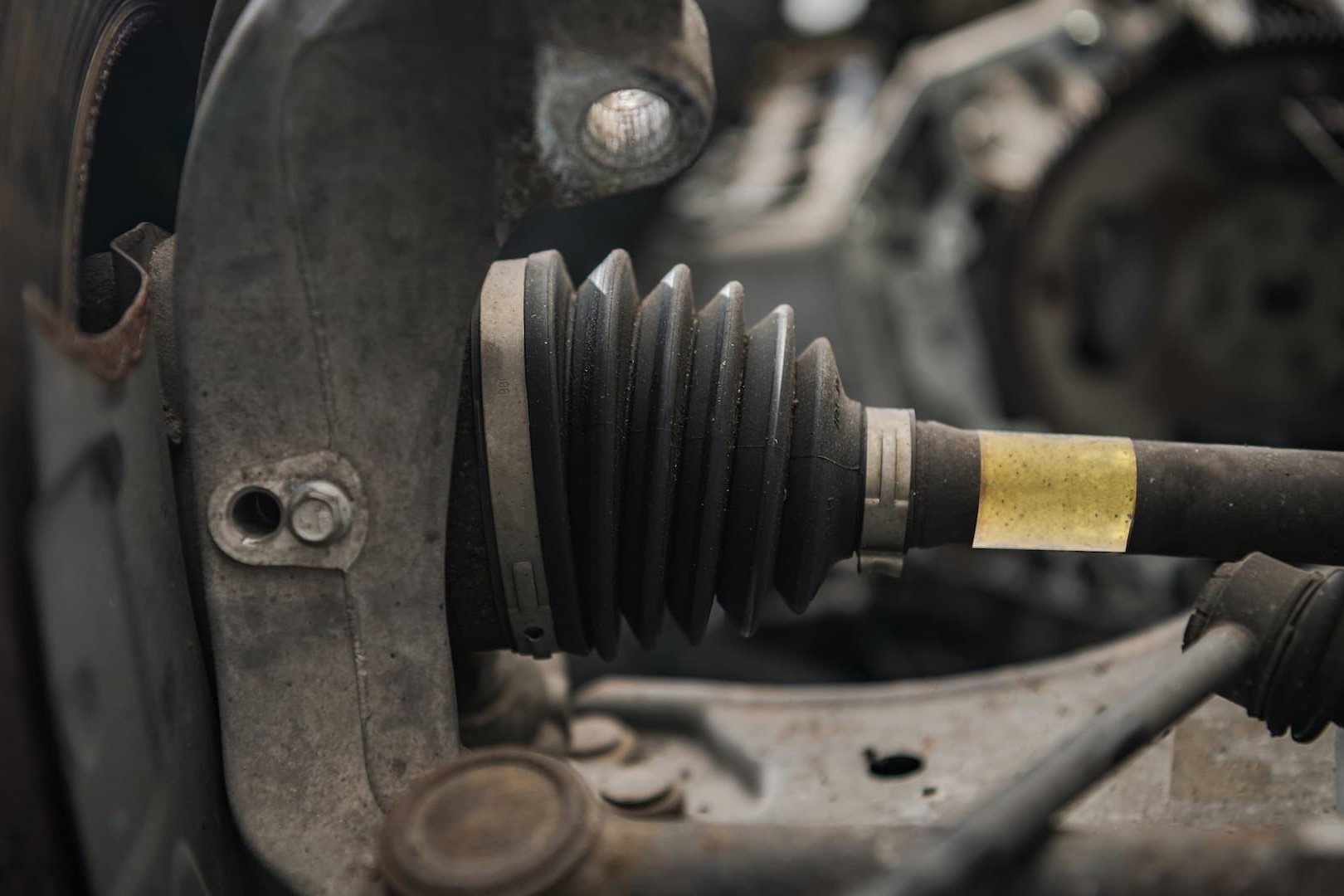Home>Health and Wellness>How To Fix A Rib Out Of Place


Health and Wellness
How To Fix A Rib Out Of Place
Published: March 3, 2024
Learn effective techniques for fixing a rib out of place and promoting overall health and wellness. Find expert tips and advice to alleviate discomfort and improve your well-being.
(Many of the links in this article redirect to a specific reviewed product. Your purchase of these products through affiliate links helps to generate commission for Noodls.com, at no extra cost. Learn more)
Table of Contents
Introduction
Experiencing discomfort or pain in the chest or back can be alarming and may lead to concerns about the underlying cause. One possible reason for such discomfort could be a rib out of place, also known as rib subluxation. This condition occurs when one of the ribs slightly shifts out of its normal position, causing discomfort and potential limitations in movement. Understanding the symptoms, diagnosis, and treatment options for a rib out of place is crucial for effectively addressing this issue and finding relief.
A rib out of place can occur due to various reasons, including sudden trauma, repetitive movements, poor posture, or muscle imbalances. The discomfort associated with this condition can range from mild to severe, and it may be exacerbated by certain movements or breathing deeply. While a rib out of place is not typically a life-threatening condition, it can significantly impact an individual's quality of life and overall well-being.
In this comprehensive guide, we will delve into the intricacies of rib subluxation, exploring the symptoms, diagnosis, and treatment options available. Additionally, we will discuss self-care techniques, seeking professional help, and preventive measures to mitigate the risk of experiencing a rib out of place in the future. By gaining a deeper understanding of this condition and the steps to address it, individuals can empower themselves to take proactive measures for their health and well-being.
Read more: How To Treat And Prevent Flared Ribs
Understanding Rib Subluxation
Rib subluxation, also known as a rib out of place, refers to the partial displacement of one or more ribs from their normal position at the junction where they connect to the spine or the sternum. This condition can occur due to various factors, including sudden trauma, repetitive movements, poor posture, or muscle imbalances. The displacement of the rib can lead to discomfort, pain, and restricted movement, impacting an individual's daily activities and overall well-being.
The rib cage plays a crucial role in protecting vital organs, such as the heart and lungs, and providing structural support for the upper body. Each rib is attached to the thoracic vertebrae in the spine at the back and the sternum at the front, forming a protective cage around the chest cavity. When a rib becomes subluxated, it can cause irritation to the surrounding tissues, including muscles, ligaments, and nerves, leading to localized pain and discomfort.
The displacement of a rib can result in a range of symptoms, including sharp or dull pain in the chest or back, tenderness around the affected area, difficulty breathing deeply, and discomfort when moving or twisting the torso. Individuals may also experience muscle spasms or a sensation of "popping" or "clicking" in the rib area. The severity of symptoms can vary, with some individuals experiencing mild discomfort while others may endure more intense pain and restricted movement.
Understanding the underlying causes of rib subluxation is essential for effectively addressing this condition. Sudden trauma, such as a fall or impact to the chest, can lead to a rib being pushed out of place. Additionally, repetitive movements or poor posture, especially in activities that strain the chest and back muscles, can contribute to the development of rib subluxation. Muscle imbalances, often stemming from poor ergonomics or overuse of certain muscle groups, can also increase the risk of experiencing a rib out of place.
In summary, rib subluxation involves the partial displacement of one or more ribs from their normal position, leading to discomfort, pain, and restricted movement. Understanding the causes and symptoms of this condition is crucial for seeking appropriate treatment and taking preventive measures to minimize the risk of future occurrences. By gaining insight into rib subluxation, individuals can empower themselves to address this issue effectively and prioritize their overall health and well-being.
Symptoms of a Rib Out of Place
The symptoms of a rib out of place, also known as rib subluxation, can manifest in various ways, impacting an individual's daily activities and overall well-being. When a rib becomes partially displaced from its normal position, it can lead to a range of discomforting sensations and limitations in movement. Understanding these symptoms is crucial for identifying and addressing rib subluxation effectively.
One of the primary symptoms of a rib out of place is localized pain in the chest or back. This pain can range from sharp and intense to dull and persistent, depending on the severity of the subluxation. Individuals may experience tenderness around the affected area, making it uncomfortable to touch or apply pressure to the rib region. The pain may worsen with certain movements, deep breathing, or when pressure is exerted on the rib cage, impacting an individual's ability to engage in regular activities.
Difficulty breathing deeply is another common symptom associated with a rib out of place. The displacement of the rib can lead to discomfort and restricted movement when attempting to take deep breaths. This can be particularly distressing for individuals, as it may cause a sensation of tightness or discomfort in the chest, impacting their respiratory function and overall comfort.
In addition to pain and breathing difficulties, individuals with a rib out of place may experience discomfort when moving or twisting their torso. Simple actions such as bending, reaching, or turning the upper body can exacerbate the discomfort, limiting their range of motion and hindering their ability to perform daily tasks comfortably.
Muscle spasms in the affected area are also common symptoms of rib subluxation. The displacement of the rib can lead to muscle tension and spasms as the body attempts to compensate for the irregular positioning of the rib. This can contribute to further discomfort and limited mobility, adding to the overall impact of the condition on an individual's well-being.
Furthermore, individuals may notice a sensation of "popping" or "clicking" in the rib area, indicating the irregular movement of the displaced rib. This sensation can be disconcerting and may occur during certain movements or when pressure is applied to the affected area.
In summary, the symptoms of a rib out of place include localized pain in the chest or back, difficulty breathing deeply, discomfort when moving or twisting the torso, muscle spasms, and a sensation of "popping" or "clicking" in the rib area. Recognizing these symptoms is essential for seeking appropriate treatment and taking proactive measures to address rib subluxation effectively.
Diagnosis of Rib Subluxation
Diagnosing rib subluxation involves a comprehensive assessment by a healthcare professional, typically a chiropractor, osteopath, or physician specializing in musculoskeletal conditions. The diagnostic process aims to identify the specific rib or ribs that are out of place and assess the extent of the displacement, enabling the development of an effective treatment plan tailored to the individual's needs.
During the initial evaluation, the healthcare provider will conduct a thorough physical examination, focusing on the chest and back regions. The individual will be asked to describe their symptoms, including the location and nature of the pain, any exacerbating factors, and the impact of the discomfort on their daily activities. Additionally, the healthcare provider will palpate the rib cage to identify areas of tenderness and assess for any irregularities in the alignment of the ribs.
To pinpoint the exact location of the rib subluxation, the healthcare provider may perform orthopedic tests and range of motion assessments. These tests involve specific movements and palpation techniques to elicit tenderness or discomfort in the affected area, aiding in the localization of the displaced rib. Imaging studies, such as X-rays or diagnostic ultrasound, may also be utilized to visualize the positioning of the ribs and confirm the diagnosis of rib subluxation.
X-rays can provide detailed images of the rib cage, allowing the healthcare provider to assess the alignment of the ribs and identify any abnormalities or misalignments. Diagnostic ultrasound, on the other hand, can offer real-time visualization of the rib and surrounding tissues, aiding in the assessment of the displacement and its impact on nearby structures.
In some cases, additional diagnostic tests, such as MRI or CT scans, may be recommended to further evaluate the extent of the rib subluxation and assess for any associated soft tissue injuries or complications. These advanced imaging modalities can offer detailed insights into the musculoskeletal structures, facilitating a comprehensive understanding of the condition and guiding the development of an optimal treatment approach.
By utilizing a combination of physical examination, orthopedic tests, and imaging studies, healthcare providers can accurately diagnose rib subluxation and develop personalized treatment plans to address the specific needs of the individual. This comprehensive diagnostic approach enables targeted interventions to alleviate discomfort, restore normal rib positioning, and promote optimal musculoskeletal function.
In summary, the diagnosis of rib subluxation involves a thorough physical examination, orthopedic tests, and imaging studies to identify the specific rib or ribs that are out of place and assess the extent of the displacement. This comprehensive diagnostic process is essential for developing effective treatment strategies tailored to the individual's condition, promoting optimal recovery and overall well-being.
Treatment Options
Addressing a rib out of place, or rib subluxation, involves a multifaceted approach aimed at alleviating discomfort, restoring normal rib positioning, and promoting optimal musculoskeletal function. The treatment options for rib subluxation encompass a range of interventions, including manual therapies, therapeutic exercises, and supportive measures tailored to the individual's specific needs.
Read more: How To Fix Scratched Sunglasses
Manual Therapies
Manual therapies, such as chiropractic adjustments and osteopathic manipulative treatments, are commonly utilized to address rib subluxation. These hands-on techniques involve gentle manipulation of the affected rib or ribs to encourage realignment and alleviate discomfort. Chiropractors and osteopaths employ precise adjustments to restore normal rib positioning, relieving pressure on surrounding tissues and facilitating improved musculoskeletal function.
Therapeutic Exercises
Therapeutic exercises play a pivotal role in the management of rib subluxation, aiming to strengthen the supporting musculature, improve flexibility, and enhance overall postural alignment. Targeted exercises focusing on the chest, back, and core muscles can help stabilize the rib cage, reduce the risk of recurrent subluxation, and promote optimal movement patterns. Physical therapists and rehabilitation specialists design customized exercise regimens to address the specific needs of individuals with rib subluxation, fostering long-term musculoskeletal health.
Supportive Measures
In addition to manual therapies and therapeutic exercises, supportive measures, such as the application of heat or cold packs, may be recommended to alleviate discomfort and reduce inflammation in the affected area. Heat therapy can help relax the surrounding muscles and improve circulation, while cold packs can mitigate swelling and provide temporary pain relief. Furthermore, supportive braces or taping techniques may be utilized to provide external support to the rib cage, promoting stability and facilitating the healing process.
Lifestyle Modifications
Lifestyle modifications, including ergonomic adjustments and postural awareness, are integral components of the treatment plan for rib subluxation. Individuals are encouraged to maintain proper posture, especially during activities that place strain on the chest and back muscles, to minimize the risk of recurrent subluxation. Ergonomic assessments of workstations and daily activities may be conducted to identify and address potential contributing factors, promoting musculoskeletal health and reducing the likelihood of rib subluxation.
Read more: How To Fix Asymmetrical Face
Comprehensive Approach
Overall, the treatment options for rib subluxation encompass a comprehensive approach that integrates manual therapies, therapeutic exercises, supportive measures, and lifestyle modifications to address the specific needs of individuals. By combining these interventions, healthcare providers can effectively alleviate discomfort, restore normal rib positioning, and empower individuals to prioritize their musculoskeletal health and overall well-being.
In summary, the treatment options for rib subluxation encompass a multifaceted approach that includes manual therapies, therapeutic exercises, supportive measures, and lifestyle modifications tailored to the individual's specific needs. By integrating these interventions, healthcare providers can effectively address rib subluxation, promoting optimal musculoskeletal function and long-term well-being.
Self-Care Techniques
Self-care techniques play a crucial role in managing the discomfort associated with rib subluxation and promoting the healing process. By incorporating simple yet effective self-care strategies into their daily routine, individuals can alleviate discomfort, support musculoskeletal health, and facilitate the recovery of a rib out of place. Here are several self-care techniques that can aid in managing rib subluxation:
1. Gentle Stretching and Breathing Exercises
Engaging in gentle stretching exercises targeting the chest, back, and rib cage can help alleviate muscle tension and promote flexibility. Additionally, practicing deep breathing exercises can aid in expanding the chest cavity and improving respiratory function, reducing discomfort associated with rib subluxation.
2. Postural Awareness
Maintaining proper posture is essential for minimizing strain on the rib cage and supporting optimal musculoskeletal alignment. Individuals are encouraged to be mindful of their posture during daily activities, such as sitting, standing, and lifting, to reduce the risk of exacerbating rib subluxation.
3. Heat and Cold Therapy
Applying heat packs or cold compresses to the affected area can provide temporary relief from discomfort and reduce inflammation. Heat therapy can help relax tense muscles, while cold therapy can mitigate swelling and numb localized pain, offering symptomatic relief.
4. Rest and Avoidance of Aggravating Activities
Allowing the affected area to rest and avoiding activities that exacerbate discomfort is essential for promoting the healing of a rib out of place. Individuals should refrain from engaging in strenuous movements or heavy lifting that may strain the rib cage, allowing the tissues to recover effectively.
5. Mindful Movement
Practicing mindful movement techniques, such as gentle yoga or tai chi, can promote relaxation, improve posture, and enhance body awareness. These low-impact activities can aid in reducing muscle tension and supporting overall musculoskeletal well-being.
6. Supportive Pillows and Cushions
Using supportive pillows or cushions when sitting or lying down can help alleviate pressure on the rib cage and promote comfort. Proper positioning and support can reduce discomfort and facilitate the healing process.
By integrating these self-care techniques into their daily routine, individuals can actively contribute to the management of rib subluxation and support the healing of a rib out of place. These simple yet impactful strategies empower individuals to take an active role in their recovery, promoting optimal musculoskeletal health and overall well-being.
Read more: How To Fix Neck Hump
Seeking Professional Help
Seeking professional help for rib subluxation is essential for obtaining an accurate diagnosis and personalized treatment plan tailored to the individual's specific needs. Healthcare providers specializing in musculoskeletal conditions, such as chiropractors, osteopaths, or physicians, play a pivotal role in addressing rib subluxation and guiding individuals toward optimal recovery and musculoskeletal health.
When experiencing symptoms indicative of a rib out of place, it is crucial to consult with a healthcare professional promptly. The initial evaluation by a healthcare provider involves a comprehensive assessment, including a thorough physical examination and targeted diagnostic tests to identify the specific rib or ribs that are out of place and assess the extent of the displacement. This meticulous approach enables healthcare providers to develop a precise understanding of the condition and formulate an effective treatment strategy.
Healthcare providers specializing in musculoskeletal conditions possess the expertise to perform manual therapies, such as chiropractic adjustments or osteopathic manipulative treatments, to realign the displaced rib and alleviate discomfort. These hands-on techniques are tailored to the individual's condition, aiming to restore normal rib positioning and promote optimal musculoskeletal function.
In addition to manual therapies, healthcare providers may recommend therapeutic exercises designed to strengthen the supporting musculature, improve flexibility, and enhance postural alignment. These targeted exercises play a crucial role in stabilizing the rib cage, reducing the risk of recurrent subluxation, and fostering long-term musculoskeletal health.
Furthermore, healthcare providers can offer guidance on supportive measures, including the application of heat or cold packs to alleviate discomfort, lifestyle modifications to minimize the risk of exacerbating rib subluxation, and ergonomic assessments to address contributing factors. By leveraging their expertise, healthcare providers empower individuals to prioritize their musculoskeletal health and take proactive measures to support the healing process.
Overall, seeking professional help for rib subluxation is instrumental in obtaining personalized care, accurate diagnosis, and targeted interventions to address the specific needs of the individual. Healthcare providers specializing in musculoskeletal conditions are dedicated to guiding individuals toward optimal recovery, promoting musculoskeletal health, and empowering them to prioritize their overall well-being.
Prevention Tips
Preventing rib subluxation involves adopting proactive measures to minimize the risk of experiencing a rib out of place and promoting optimal musculoskeletal health. By incorporating preventive strategies into daily routines and activities, individuals can reduce the likelihood of rib subluxation and prioritize their overall well-being. Here are several key prevention tips to consider:
-
Maintain Proper Posture: Practicing good posture is essential for reducing strain on the rib cage and supporting optimal musculoskeletal alignment. Whether sitting, standing, or engaging in physical activities, being mindful of posture can help minimize the risk of rib subluxation.
-
Strengthen Core Muscles: Incorporating exercises that target the core muscles, including the abdominals and back muscles, can enhance the stability of the rib cage and reduce the risk of rib subluxation. Strengthening the core provides essential support for the upper body and promotes overall musculoskeletal health.
-
Avoid Repetitive Strain: Minimizing repetitive movements or activities that place excessive strain on the chest and back muscles can help prevent rib subluxation. Individuals engaged in physically demanding tasks should incorporate regular breaks and ergonomic adjustments to reduce the risk of overuse injuries.
-
Practice Mindful Movement: Engaging in mindful movement practices, such as yoga or tai chi, can improve body awareness, promote flexibility, and reduce muscle tension. These low-impact activities support musculoskeletal health and contribute to the prevention of rib subluxation.
-
Use Proper Lifting Techniques: When lifting heavy objects, utilizing proper lifting techniques is crucial for minimizing strain on the rib cage and supporting optimal musculoskeletal function. Individuals should be mindful of their lifting posture and seek assistance when handling heavy loads.
-
Ergonomic Assessments: Conducting ergonomic assessments of workstations and daily activities can identify potential contributing factors to rib subluxation. Making ergonomic adjustments, such as optimizing seating and workspace setups, can reduce the risk of musculoskeletal strain.
-
Stay Active and Mobile: Regular physical activity and movement promote overall musculoskeletal health and flexibility, reducing the likelihood of rib subluxation. Incorporating a balanced exercise regimen that includes strength training, cardiovascular activities, and flexibility exercises supports optimal musculoskeletal function.
By integrating these prevention tips into their daily lives, individuals can take proactive measures to reduce the risk of rib subluxation and prioritize their musculoskeletal health. These preventive strategies empower individuals to maintain optimal posture, strengthen supporting musculature, and minimize the likelihood of experiencing a rib out of place, promoting long-term well-being and comfort.
Conclusion
In conclusion, understanding the intricacies of rib subluxation is essential for individuals seeking relief from the discomfort and limitations associated with a rib out of place. This comprehensive guide has provided insights into the symptoms, diagnosis, treatment options, self-care techniques, seeking professional help, and prevention tips related to rib subluxation. By gaining a deeper understanding of this condition and the steps to address it, individuals can empower themselves to take proactive measures for their health and well-being.
Rib subluxation, characterized by the partial displacement of one or more ribs from their normal position, can lead to localized pain, difficulty breathing deeply, discomfort when moving or twisting the torso, muscle spasms, and a sensation of "popping" or "clicking" in the rib area. Recognizing these symptoms is crucial for seeking appropriate treatment and taking proactive measures to address rib subluxation effectively.
The diagnostic process for rib subluxation involves a comprehensive assessment by a healthcare professional, typically a chiropractor, osteopath, or physician specializing in musculoskeletal conditions. This meticulous approach enables healthcare providers to accurately diagnose rib subluxation and develop personalized treatment plans to address the specific needs of the individual.
Treatment options for rib subluxation encompass a multifaceted approach that includes manual therapies, therapeutic exercises, supportive measures, and lifestyle modifications tailored to the individual's specific needs. By integrating these interventions, healthcare providers can effectively alleviate discomfort, restore normal rib positioning, and empower individuals to prioritize their musculoskeletal health and overall well-being.
Self-care techniques play a crucial role in managing the discomfort associated with rib subluxation and promoting the healing process. By incorporating simple yet effective self-care strategies into their daily routine, individuals can actively contribute to the management of rib subluxation and support the healing of a rib out of place.
Seeking professional help for rib subluxation is instrumental in obtaining personalized care, accurate diagnosis, and targeted interventions to address the specific needs of the individual. Healthcare providers specializing in musculoskeletal conditions are dedicated to guiding individuals toward optimal recovery, promoting musculoskeletal health, and empowering them to prioritize their overall well-being.
Preventing rib subluxation involves adopting proactive measures to minimize the risk of experiencing a rib out of place and promoting optimal musculoskeletal health. By incorporating preventive strategies into daily routines and activities, individuals can reduce the likelihood of rib subluxation and prioritize their overall well-being.
In essence, by gaining a comprehensive understanding of rib subluxation and implementing the insights and strategies outlined in this guide, individuals can take proactive steps to address this condition, promote optimal musculoskeletal health, and enhance their overall well-being.
